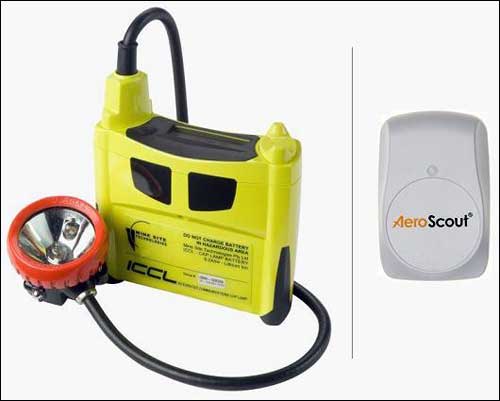Newmont‘s Leeville gold mine, one of Nevada’s largest gold-mining operations, is using a Wi-Fi based system to track the movement of personnel and equipment passing through its 21 levels of underground tunnels. The system provides the mining operation with safety, by helping it locate and contact the appropriate individuals based on that location, as well as gain efficiency by knowing who and what is underground.
Like most mines, Newmont’s Leeville mining operation has an environment that is very complex, says Amir Ben-Assa, the industry solutions marketing director of AeroScout, which partnered on this application with Mine Site Technologies. Hundreds of people and vehicles serving a variety of functions are present underground at any given time—extracting 3,200 tons of soil and minerals daily—and when the mine needs to locate a specific type of worker, or move personnel out of an area, tracking down those individuals can be difficult.
“Mines are under tremendous pressure to improve efficiency,” Ben-Assa says—due, in part, to the high cost of equipment employed in the tunnels. Staff members and equipment need to be moved quickly when necessary, such as when machinery fails and requires repair or replacement, or to carry out a controlled explosion. Movement within the mine can be slow, however—often taking a person 30 to 60 minutes to travel from one location underground to another. In addition, safety regulations, such as those of the Mine Safety and Health Administration (MSHA), require a mine’s management to assure the safety of its underground personnel by knowing their specific locations.
The RFID system deployed by the Leeville mine is intended to address both concerns. Installed this spring, the system includes 500 AeroScout T2 Intrinsically Safe Wi-Fi Tags, to track 450 employees and 50 pieces of equipment, as well as the company’s MobileView software. A tag is built into the battery pack that powers a miner’s cap lamp, in order to ensure that workers do not enter the tunnels without the tags.
Within the tunnels, Ben-Assa says, MST installed 85 of its ImPact Wi-Fi access points connected to the back-end system via Ethernet cables or optic fiber, thus giving the mine the least expensive and most effective coverage in its tunnels. All 85 access points receive data from RFID tags, as well as from IP phones, and send that information to the mine’s back-end system via a cabled connection.
In the case of the RFID system, the tag’s ID number is collected by the MobileView software, which calculates tag location based on the access point and signal strength, links it to a particular piece of equipment or employee, and displays that tag as an icon on the software-generated map depicting the tunnel system. In this way, mine managers can seek a specific individual, search for any people or equipment that could be in harm’s way in the event of an accident or controlled explosion, or find someone with a specific job title who is closest to the area in which he is needed. If an electrician is required in a specific location, for instance, management can locate the closest qualified individual to respond to that site, thereby saving time that might otherwise be necessary in having another electrician make a long journey to reach that area.
The system is also used at the mine’s 16 mustering areas, where workers gather in the event of a controlled explosion, accident or other dangerous incident. There, the mine’s managers can ascertain that everyone is safely in the mustering area, or determine who is still missing and see that person’s location on the MobileView software. The system also includes video-over-IP in the mustering chambers, with motion-activated video cameras, so that the staff can immediately view, on a separate system, real-time video indicating any individuals who might be in the chamber.
Furthermore, by applying tags to equipment, the mine is able to locate the vehicles or tools it needs. The MobileView software allows the firm to track which equipment is in which area, as well as store such data as which equipment needs to be serviced, inspected or maintained. If a piece of equipment is due for servicing, managers can locate that item and either dispatch the necessary crews to the equipment, or move it to a location where it can be serviced.
“Newmont is very pleased with the solution,” Ben-Assa states, adding that the benefits, to date, have included improved safety and mine communications, all converged on a common standard infrastructure.
AeroScout Exciters can also be installed at gateways between one area of a tunnel system and another, in order to provide security alerts, though Newmont’s is not utilizing this feature. The Exciter causes a passing AeroScout tag to transmit a message, thereby providing instant knowledge that a tagged asset or person has passed through a gate, doorway or some other chokepoint. For mines using Exciters, if a miner moves from one area to the other—such as a restricted site he is not permitted to access—an alert can be displayed on the MobileView software and sent to management via e-mail.
In the past year, MST has installed similar systems using its ImPact and AeroScout solutions at Xstrata’s Beltana coal mine (see Xstrata Mines RFID’s Benefits) and BMA‘s Crinum East coal mine, in Australia. The system has also been deployed at Yunnan Copper Corp.’s Dahongshan mine, in China, Agnico Eagle‘s Kittila mine, in Finland, and Konkola‘s copper mines>, in Zambia.



